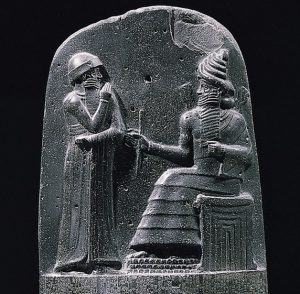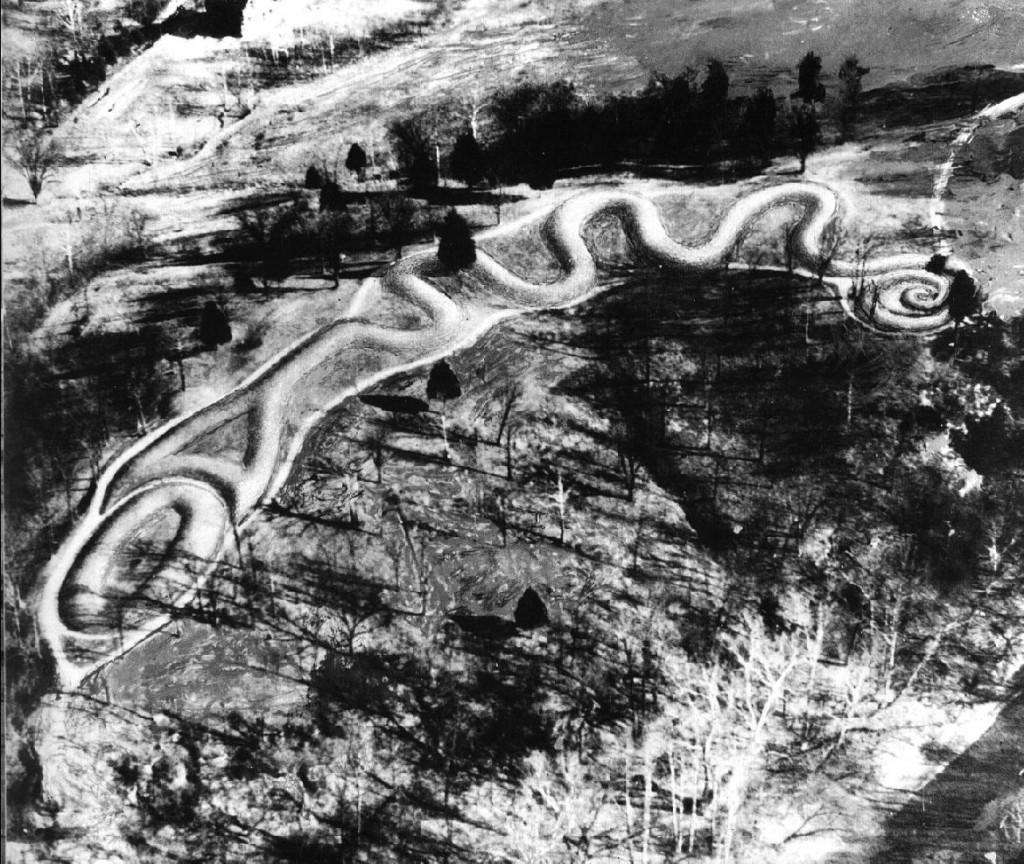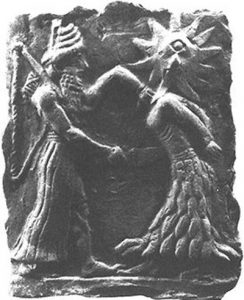Hammurabi, Shamash, and Comet Venus
 Atop the famous stele containing Hammurabi’s Code is a depiction of Hammurabi and Shamash, the Sun god, who was also the Babylonian god of justice. The swirling headdress of Shamash in this image might seem merely decorative, but in fact it possesses a dynamic meaning.
Atop the famous stele containing Hammurabi’s Code is a depiction of Hammurabi and Shamash, the Sun god, who was also the Babylonian god of justice. The swirling headdress of Shamash in this image might seem merely decorative, but in fact it possesses a dynamic meaning.
At the back of Shamash’s neck is an oval object that has no obvious purpose. It appears to be attached to the coiled shape of the headdress, as if it were the head of a serpent. But why would Shamash be wearing a serpent on his head?
To answer this question, one must become aware of the compelling new evidence for and reinterpretation of the Venus theory of Immanuel Velikovsky. We now know that, although he made plenty of pioneer’s mistakes, Velikovsky was wonderfully right when he wrote in his book Worlds in Collision1 that Venus repeatedly approached Earth as a comet during the Bronze Age, and their gravitational interaction caused devastation throughout the world. We now know that Venus had been pulled by Jupiter’s gravity from the outer solar system shortly before 2525 BC.
Tidal heating from Jupiter’s gravity turned Venus into a molten, ovoid comet. Some Venus effigies depicted it as a serpent with a long tail; the Great Serpent Mound in Ohio showed the serpent with an egg (an oval) in its mouth. In the case of Shamash’s headdress, it appears that the Babylonians thought of Venus as a companion to the Sun that closely tracked it as an inner planet. Thus Hammurabi’s artist ingeniously depicted Venus as extending from the back of Shamash’s neck up into his coiling headdress. Evidently, Hammurabi or the artist wanted to ensure that the dreaded Comet Venus received due respect. A similar notion of Venus as a serpent-like companion of the Sun appears in the Egyptian uraeus, where a cobra stands out from the headdress of a pharaoh or god.
the Babylonians thought of Venus as a companion to the Sun that closely tracked it as an inner planet. Thus Hammurabi’s artist ingeniously depicted Venus as extending from the back of Shamash’s neck up into his coiling headdress. Evidently, Hammurabi or the artist wanted to ensure that the dreaded Comet Venus received due respect. A similar notion of Venus as a serpent-like companion of the Sun appears in the Egyptian uraeus, where a cobra stands out from the headdress of a pharaoh or god.
 This interpretation of Shamash’s headdress can help us decipher another piece of Mesopotamian iconography as well. In a baked clay depiction from Khafajeh (ancient Tutub), an unknown god is shown stabbing a solar deity. The god’s headdress is the same coiled serpent as on Shamash in the Stele of Hammurabi, and so he must be Shamash. Meanwhile, the Sun is depicted as an old, decrepit captive. This is reminiscent of the myths of Egypt and Mesoamerica about an old Sun that dies in order to make way for a new one. The timing also fits. This scene appears to be from the years following the first inversion of the Earth around 2200 BC in response to a particularly close passage of Venus (there would be three later such inversions, around 1628, 1210, and 820 BC). So the depiction shows the new Sun Shamash, now amazingly rising in the West, replacing the old one.
This interpretation of Shamash’s headdress can help us decipher another piece of Mesopotamian iconography as well. In a baked clay depiction from Khafajeh (ancient Tutub), an unknown god is shown stabbing a solar deity. The god’s headdress is the same coiled serpent as on Shamash in the Stele of Hammurabi, and so he must be Shamash. Meanwhile, the Sun is depicted as an old, decrepit captive. This is reminiscent of the myths of Egypt and Mesoamerica about an old Sun that dies in order to make way for a new one. The timing also fits. This scene appears to be from the years following the first inversion of the Earth around 2200 BC in response to a particularly close passage of Venus (there would be three later such inversions, around 1628, 1210, and 820 BC). So the depiction shows the new Sun Shamash, now amazingly rising in the West, replacing the old one.
We can see that the coiled serpent embodiment of Venus serves as a third Mesopotamian representation of Venus. The Bull of Heaven (so named because of the twin tails of Venus, with the planet blocking the central portion from the Sun’s rays, and the tails resembling a bull’s horns) was the male version. The goddess Ishtar was the female one (the Sumerian goddess Inanna had originally been co-opted for this role).
In addition to providing yet another piece of newly interpreted evidence supporting the Venus theory, finding Comet Venus in Shamash’s headdress suggests that we can find other such evidence hidden in plain sight, if only we can manage to see things through the eyes of the ancients.
*****
Kenneth J. Dillon is an historian who writes on science, medicine, and history. See the biosketch at About Us. For further detective work on ancient and modern history, see his The Knowable Past (Washington, D.C.: Scientia Press, 2018).
